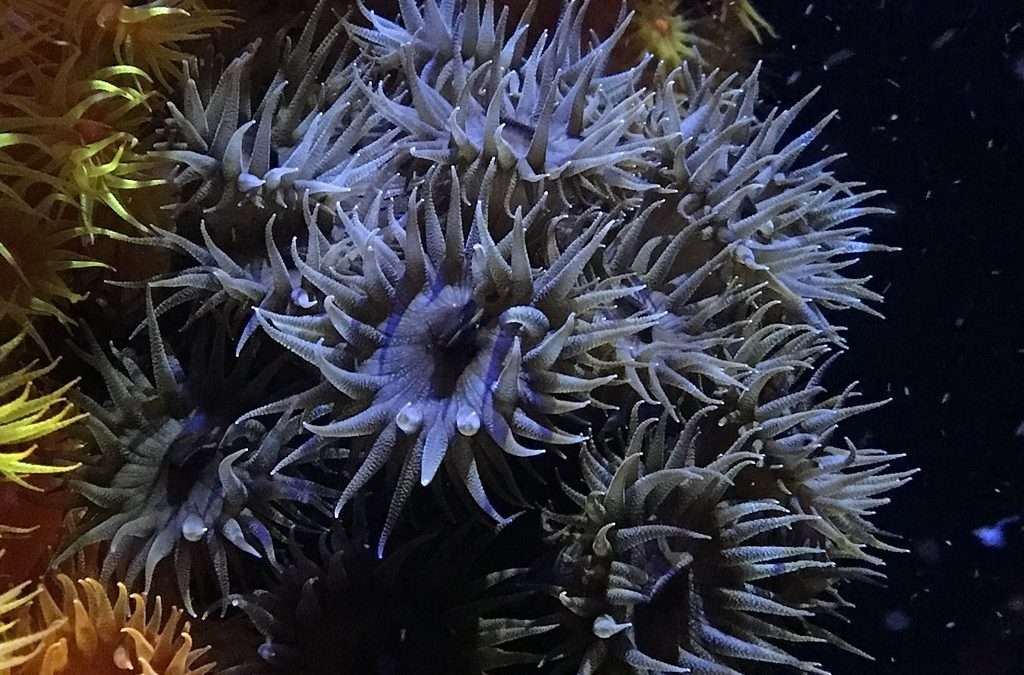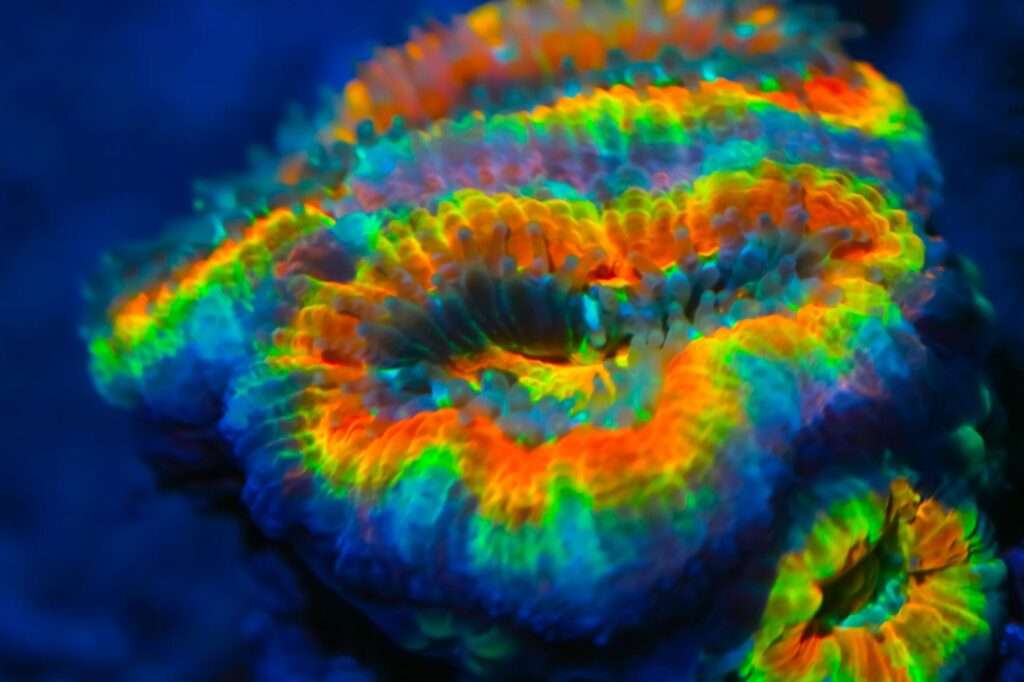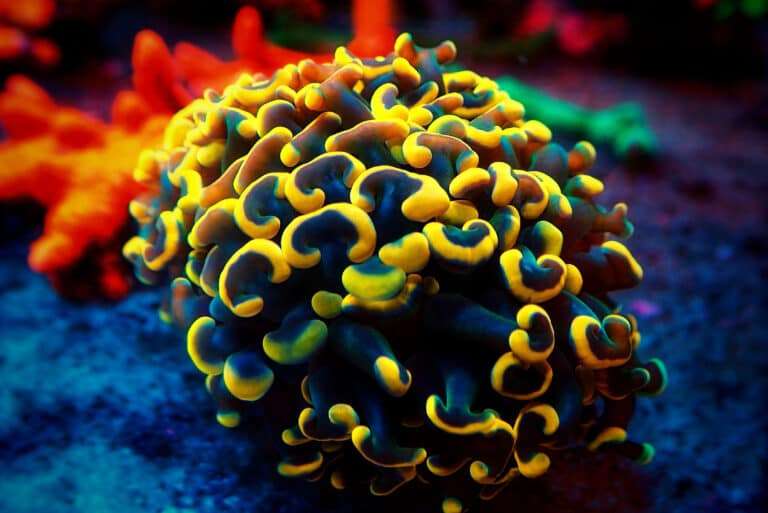
With its corallites, the hard, spherical, tubular structures the polyps dwell in, located on the branches, the Black Sun Coral contains highly fleshy polyps. The coenosteum is a tissue that protects the corallites. Their polyp tentacles range in color from olive green to brownish black, with the coenosteum and very core of the polyps being a greenish black to brownish black color. Although the polyps’ hues can vary, they are not the same dark brown or black as those seen on the coenosteum or Black Cup Coral, Black Tubeastrea, Branching Black Sun Coral, and Green Sun Coral.
The Black Sun Corals’ polyps stretch primarily at night, though if food is available, they may sometimes emerge during the day.
Habitat
The T. micranthus grows in branched colonies up to 40″ (1 m) tall. On the branches are their corallites, which are the hard, spherical, tubular structures where the polyps reside. The coenosteum is a tissue that protects the corallites.
Its tentacles range in color from greenish black to brownish black. The coral totally withdraws during the day, leaving just the dark coenosteum visible, giving the impression that the coral is a tree with elevated, flat, spherical nubs all over the branches
In Captivity
- Feeding
Corals in the azooxanthellate, or non-photosynthetic, genus Tubastraea are so-called. They may absorb dissolved organic matter, food particles from the water column, and planktonic creatures to feed. Others eat little fish as well.The Black Sun Coral must be fed twice to three times per day in captivity. Feed reasonable-sized prey such as enhanced live, defrosted, or freeze-dried adult mysis shrimp, brine shrimp, and other prey of a like size. Put a vitamin supplement on the food.
They appear “bloated” if they have been well-fed. Before they begin to feed, young colonies could require the shrimp juice to linger for a few nights on the tops of their closed polyps. The process could take up to two weeks, so be patient and persistent. The finest results come from feeding at the same time every night. If these corals are not nourished, they will stop spreading their tentacles and eventually die.
Feeding your Tubastraea can be done in a variety of ways to help them retain the food.
- Taking the coral out of the tank and putting it in a container with warm tank water is one technique. To keep the temperature constant, you might also let the container float in the tank. After feeding, the coral can be put back in the tank, and the tainted water can be discarded. This choice will assist in maintaining high water quality. Before removing the coral, don’t forget to move it around so the polyps pull in.
- Social Interactions and Compatibilitys
The T. micranthus gets along well with other corals. However, it’s crucial to keep them separate from other corals because they lack strong stinging tentacles. The only impact they will have on other corals will be from their frequent feeding requirements, which may cause water pollution.
The nudibranch Phestilla melanobrachia is another irritant. The specific Tubastraea that it eats gives it its color. Examine your specimen carefully after receiving it to check for and get rid of any pests.
Table





